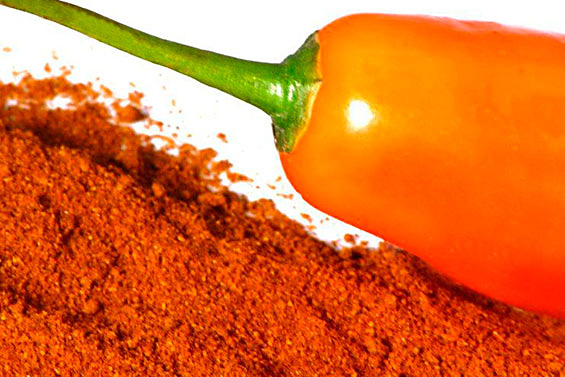
|
Product: Mirasol chili pepper (Capsicum baccatum var. Pendulum)
|
|
| Basic Information: Like other members of the Baccatum species, it is native to South and Central America and has been cultivated for more than 7,000 years. The region of Peru and Bolivia is one of the two centers of origin with the greatest genetic diversity of the chili pepper. The mirasol chili is called that because it has been dehydrated facing the sun, in the open air. Drying the chili allows it to be preserved for several months, allowing it to concentrate its taste and color. It is common to roast it so that its flavor comes out. | |
|
Origin: Peru
|
Region: La Libertad, Lima, Ica and Puno.
|
|
Seasonality:
Jan
Feb
Mar
Apr
May
Jun
Jul
Aug
Sep
Oct
Nov
Dec
|
|
|
Certifications: Kosher
|
Available presentations: Powder, flakes.
|
|
Suggested industrial applications: Food industry: Meat products, sausages, fish, preparations, healthy snacks.
|
|
|
Uses: Food additive, cooking seasoning.
|
|
| Properties: Excellent source of vitamins B and C, iron, thiamine, niacin, potassium, magnesium and riboflavin. | |
|
Main functionality: Its consumption helps combat the pain generated by arthritis and stimulates the nervous system, because it causes the body to produce endorphins (compounds that are associated with satisfaction and well-being).
|
|
| Secondary Functionality: Capsaicin is suggested to help promote the healing of gastric ulcers by inhibiting acid secretion as well as stimulating alkali production. The capsaicin contained in this chili helps combat pain. | |
Nutritional Table:
| Components / Components | Per 100g / Per 100g |
| Calories / Calories | 302 kcal |
| Water / Water | 8 g |
| Carbohydrates / Carbohydrates | 64.8 g |
| Proteins / Proteins | 7.3 g |
| Total fat / Total fat | 6.3 g |
| Fiber / Fiber | 28.7 g |
| Ash / Ash | - |
| Calcium / Calcium | 124 mg |
| Phosphorus / Phosphorus | 166 mg |
| Iron / Iron | 8.2 mg |
| Thiamine / Thiamine | 0.12 mg |
| Riboflavin / Riboflavin | 1.48 mg |
| Niacin / Niacin | 4.15 mg |
| Ascorbic acid / Ascorbic acid | 1324 mg |